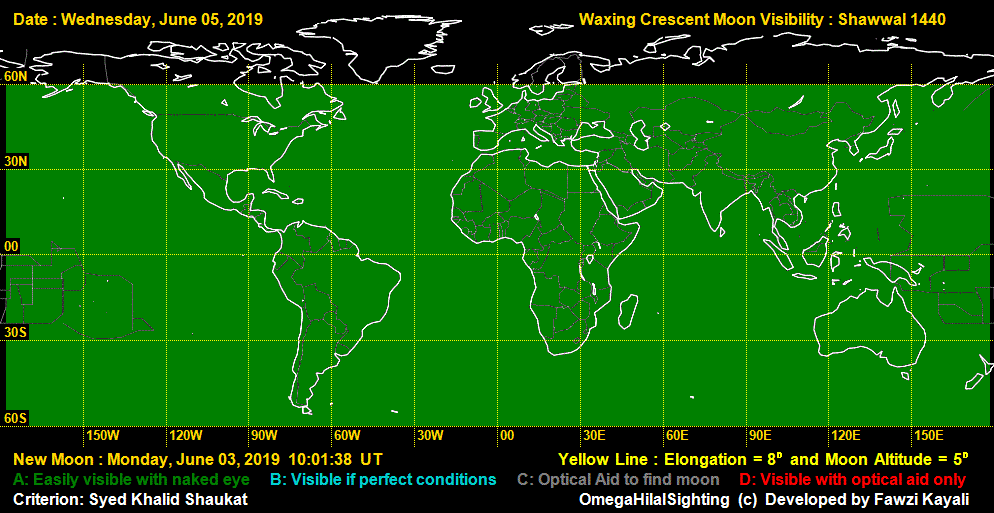Muslims all over the world will be looking, on June 3, for the new moon of the holy month of Shawwal to mark the beginning of `Eid Al-Fitr after the fasting month of Ramadan, Moonsighting reported.
The astronomical new moon (conjunction) of the new Hijri month of Shawwal will occur on June 3, 2019 (Monday) at 10:03 UT.
On June 3, the moon can be seen with a high powered telescope in the Americas and can be seen with difficulty in Polynesian Islands.
In the eastern part of the Muslim world, such as Malaysia and Indonesia, the moon will set one minute before sunset (Maghreb) making it impossible to see it in Kuala Lumpur and Jakarta. The same applies to the northern part of the Muslim world.
In Riyadh, moon will set three minutes after Maghreb, making it very difficult, almost impossible, to sight the moon; in Makkah, the moon will set 5 minutes after Maghreb making its sighting also very difficult.
The same applies for most of the Arab countries, such as Egypt, Yemen, Palestine, Libya, Tunisia, and Sudan.
Based on the aforementioned astronomical analysis, Tuesday will be the 30th day of Ramadan in those regions, and Muslims will thus observe Eid on Wednesday if the countries go by moonsighting to determine the day of Eid.

So on June 4, 2019 (Tuesday), the moon can be easily seen in almost the whole world except in New Zealand, Australia, and Japan.


Shawwal is the tenth month of the Islamic calendar. It literally means to raise or lift as this was the time when she-camels would normally be carrying a fetus.
`Eid Al-Fitr is one of the two main Islamic religious festivals along with `Eid Al-Adha.
During `Eid days, families and friends exchange visits to express well wishes and children, wearing new clothes bought especially for `Eid, enjoy going out in parks and open fields.
The Hijri calendar is a lunar calendar, and months begin when the first crescent of a new moon is sighted. Since the Hijri lunar calendar year is 11 to 12 days shorter than the solar year, Shaaban migrates throughout the seasons.
A new Hijri month starts when the First Crescent appears before sunset by a time gap of a few minutes at minimum.